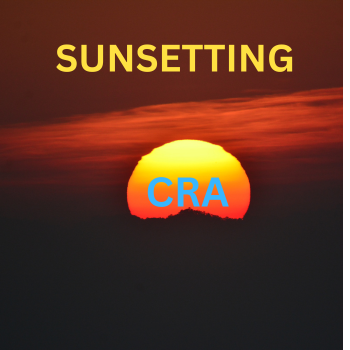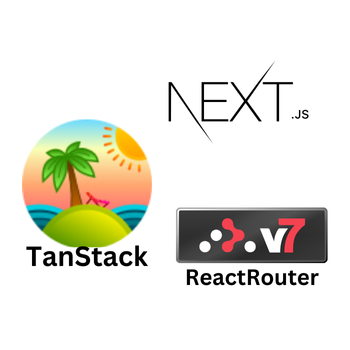Home > frontend > Create React App is Deprecated: 3 Solid Options to Migrate your Existing CRA Projects or Create one
Create React App is Deprecated: 3 Solid Options to Migrate your Existing CRA Projects or Create one
CRA’s deprecation left you hanging? Try Next.js, ReactRouter, or TanStack: modern React tools that handle SPA, SEO, speed, and setup for you. See which one fits your project
By :Thomas Inyang🕒 17 Feb 2025

Introduction
In a recent development, the React team announced the deprecation of Create React App (CRA) for new projects, urging developers to migrate their existing apps to a framework. The ReactJs also promise to provide documentation for when to use a framework that best fits your idea project or building a framework.
CRA did change the narrative on creating web applications since 2016 by simplifying setting up a project with React, but it comes with the following limitations such as performance, scalability, and lacking the ability to render SEO.
In this post, you will get to know about the following highlights:
- Why CRA is deprecated and its major issues.
- Top framework alternatives for 2024.
- Links to Step-by-step migration strategies.
- How modern tools solve SEO, routing, and data-fetching challenges.
Why Create React App is Being Deprecated
The ReactJs team highlighted some reasons for sunsetting CRA such as no active maintainers and there are existing frameworks to pick from that solve these problems already. These reasons can be destructured into the following:
1. Outdated Tooling: Slow Builds and Missing Features.
- CRA is based on Webpack, an outdated bundler that results in slow build times and wasteful operations. Modern tools like Vite replace Webpack with faster equivalents (such as esbuild), reducing build times by 60-70%. CRA also misses important improvements.
- No concurrent data fetching (parallel fetching), resulting in network waterfalls and content delays.
- No code splitting results in big bundles that impede website load times.
2. Missing Production Features: CRA requires manual integration for basic operation.
- Routing: Requires developers to use React Router for URL navigation.
- SEO: Lacks SSR/SSG, this requires further configuration for search engine presence.
- Data Fetching: Relies on useEffect which lacks framework-level optimizations.
This adds unneeded complexity and diverts resources from essential development.
3. Maintenance Challenges: A Risk for Long-Term Projects.
- No Active Maintainers: CRA hasn’t had updates to align with React 19+ features (e.g., Server Components, Actions).
- Security & Compatibility Risks: There are unpatched dependencies and outdated configurations that could expose apps to vulnerabilities.
- Community Shift: The React ecosystem now prioritizes frameworks (NextJs, Remix) with active maintenance and updates.
React’s Official Stance: "CRA will remain in maintenance mode but won’t receive updates. New projects should use frameworks like Next.js, which provide integrated solutions for real-world apps."
ReactJs also advised using a framework to create new React apps. All of the frameworks proposed support client-only SPAs and can be deployed to a CDN or static hosting service (GitHub Page, Vercel, netlify) without requiring a server.
See Also: How to Build and Deploy on Github Page
For current apps, these tutorials will help you convert to a client-only SPA.
- How to Migration from CRA to NextJs.
- React Router’s adoption guide.
- How to Migrate from Expo Webpack to Expo Router migration guide
What are the Critical Limitations of Create React App?
1. Routing: No URL-Based Navigation
Create React App (CRA) lacks a native routing system, forcing developers to:
- Use useState workarounds to toggle components, which fail to create shareable URLs or scalable app structures.
- Manually integrate third-party libraries like React Router for basic navigation.
Problem:
// ❌ Basic state-based routing (no URL support)
const [route, setRoute] = useState('home');
return (
{route === 'home' ? <Home /> : <Dashboard />}
);
Solution: Frameworks like React Router or Next.js provide URL-driven routing:
This how routing is done using ReactRouter.
For NextJs: The homepage url is app/page.jsx.
localhost:3000/
ProfilePage url: app/profilePage/page.jsx
localhost:3000/profilePage
Both solutions now provide shareable URLs.
2. Data Fetching: Network Waterfalls
Fetching data in `useEffect` delays rendering, harming the user experience.
Problem:
Solution: Packages such as React Query and SWR can be used for data fetching which allows you to prefetch data and start the request before the component renders.
This is an example of using the Javascript fetch method to fetch data via the server side (NextJs)
See Also: How to Data with Javascript Fetch Method.
This shortens the time it takes to see the content on the screen and can enhance the user experience.
3. Code Splitting: Bloated Bundles
This is another typical issue in creating a React app is code splitting.
Create React App (CRA) ships all code as one bundle, slowing initial load times, and does not contain a specific code-splitting solution. If you're just getting started, you may not even consider code separation.
This means that your app is provided as a single bundle -- bundle.js (75kb). However, for optimal performance, you should "split" your code into different bundles, allowing the user to download only what they require. This reduces the time it takes for the user to load your app by just downloading the code required to view the page they are currently on.
Core.js is 25kb, home.js is 25kb, and profilePage.js is also 25kb.
Code splitting can be accomplished with React.lazy. However, this implies that the code is not fetched until the component is rendered.
Top 3 CRA Alternatives for 2024
It's no longer a news that Create React App is deprecated, but here are some alternatives to Create a new or migrate an existing React App.

NextJs
NextJs is a ReactJs framework used to build high-quality web applications with the power of React components. It comes with the following features:
- Routing: It is a file-system-based router built on Server Components that includes layouts, nested routing, loading states, error handling, and more.
- Rendering: It can render various components both on the client and server sides. Next.js is used to further improve the server with static and dynamic rendering. Streaming with the Edge and Node.js runtimes.
- Data Fetching: the Async/await feature in the Server Components simplifies data fetching with the use of an expanded fetch API that allows request memoization, caching, and revalidation.
- Styling: NextJs supports your favorite styling methods, such as CSS Modules, Tailwind CSS, and CSS-in-JS, and provides optimization of Image, font, and script to boost an application's Core Web Vitals and User Experience.
- TypeScript Support: NextJs has improved support for TypeScript, including improved type checking and faster compilation, as well as a custom TypeScript plugin and type checker.
See Also: How to Implement Free Analytics in NextJs
React Router v7
React Router is a routing library or framework depending on your preference for multi-strategy routing that bridges the gap between React 18 to React 19. It comes with the following features:
- Offline + Sync Architecture Focus: It excels in apps requiring offline functionality, and background data synchronization, and is Ideal for Apps with rare pending states (minimal loading indicators) and Long-running user sessions (e.g., dashboards, internal tools).
- For its Framework Features: The React Router (Framework) comes with features such as data loading with type safety, actions with type safety, automatic revalidation of page data after actions, Server Side Rendering(SSR), Single Page Application (SPA), and static rendering strategies, APIs for pending states and optimistic UI, and deployment adapters.
See: How to Implement Dynamic Routing using React Router
TanStack
TanStack is a full-stack React framework based on the TanStack Router. It uses tools such as Nitro and Vite to enable full-document SSR, streaming, server functions, bundling, and other features. It is ready for deployment to your preferred hosting provider. You can use TanStack Router for client-side routing and TanStack Start for full-stack routing.
It comes with the following features:
TanStack Start features:
- Full-document SSR & Hydration
- Streaming
- Server Functions / RPCs
- Full-Stack Type Safety
- Robust Routing
- Rich Client-Side Interactivity
TanStack Router features:
- 100% inferred TypeScript support
- Typesafe navigation
- Nested Routing and layout routes
- Built-in Route Loaders w/ SWR Caching
- Designed for client-side data caches (TanStack Query, SWR, etc.)
- Automatic route prefetching
- Asynchronous route elements and error boundaries
- File-based Route Generation
- Typesafe JSON-first Search Params state management APIs
- Path and Search Parameter Schema Validation
- Search Param Navigation APIs
- Custom Search Param parser/serializer support
- Search param middleware
- Route matching/loading middleware
Why These Frameworks Are the Future for Creating React App
Modern React frameworks are the future because they solve CRA’s shortcomings by providing:
1. Integrated Tooling: framework like NextJs comes with pre-defined routing while React-Router and TanStack are manually configured, data fetching can be done with the use of TanStack Router, SWR, and Javascript Fetch method which all provide caching and revalidating of data, and SSR/SSG in one package.
2. Performance Optimization: Frameworks like NextJs provide features such as parallel data fetching, pre-fetching, image and font optimization, and code splitting (reduced bundle sizes).
3. SEO & Accessibility: NextJs offers built-in server-side rendering (SSR) that is suitable for dynamic metadata rendering which ensures contents are indexable and accessible by default on search engines.
4. Community Support: NextJs is strongly supported by Vercel, by providing long-term maintenance with 15 million+ weekly downloads. This defines ecosystem maturity. TanStack on the other side is backed by Netlify, Material UI, and others.
Conclusion
This post highlighted the reasons behind the deprecation of Create React App (CRA) due to some major issues: Outdated Tooling, Missing Production Features, Maintenance Challenges, etc.
This post highlighted top frameworks (NextJs, React Router, and TanStack) that can be used to create a React project (App or Framework). These tools solve the problems developers face when using CRA.
Also, this post provided links on how to migrate from existing apps built with CRA to use modern frameworks
If you find this post interesting, Please Share and Drop your Comments.